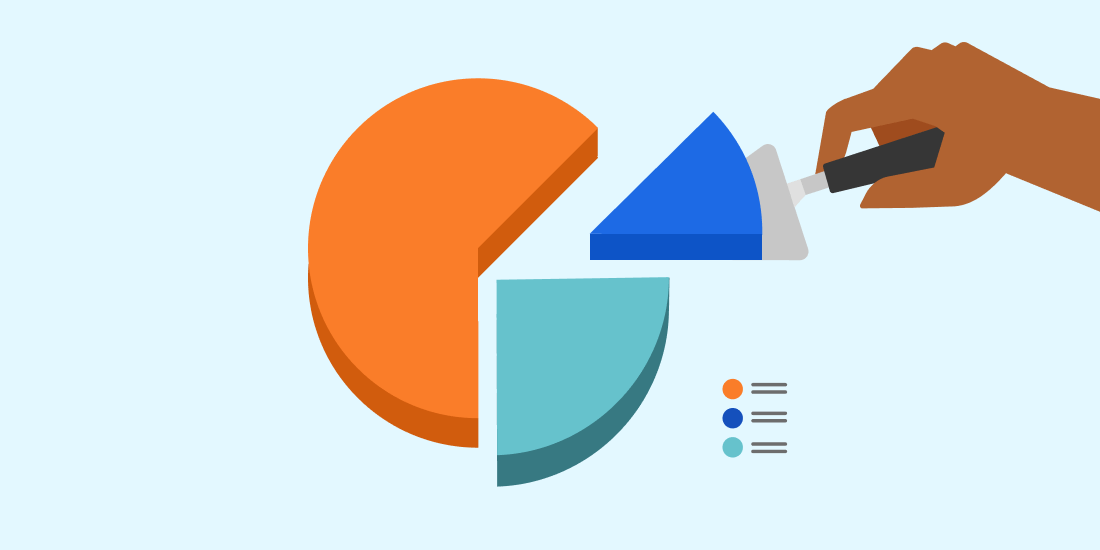Betterment Editors
Meet our writer
Betterment Editors
The editorial staff at Betterment aims to keep the Resource Center up to date with our evolving approach to financial advice, our product offerings, and new research. Articles attributed to the editorial staff may have originally been published under other Betterment team members or contributors. Read more detail on the Betterment Resource Center.
Articles by Betterment Editors
-
![]()
Life and taxes, not death and taxes
Life and taxes, not death and taxes Nov 2, 2023 4:23:09 PM Taxes aren’t fun but your life should be. We’ve got a couple of tools to help with taxes. See if they’re right for you. Benjamin Franklin once said, "In this world, nothing can be said to be certain, except death and taxes." At Betterment, we prefer a more optimistic take: Nothing is certain, except life and taxes. And we want to help you live a better life by helping you save money on taxes as you invest. The main idea: Unlike many investment managers, we automate advanced tax-efficient strategies, making life easier if the features are right for you, including: Tax Loss Harvesting+ (TLH+) Tax Coordination Let’s see how each strategy works. What is TLH+? TLH+ seeks to increase the annual returns in a taxable account by automating an advanced tax-saving strategy. When investments lose value, Betterment looks for opportunities to sell them to help offset the taxes that come with income and capital gains. You can offset up to $3,000 of your ordinary income each year with tax losses. TLH+ coordinates harvests across your household’s Betterment accounts, including IRAs, 401(k)s, joint accounts, and trusts. What is Tax Coordination? Tax Coordination is designed to optimize and automate a strategy called asset location. It organizes your portfolio so that the highest-tax assets go into the accounts with the biggest tax breaks. Using Tax Coordination can help you make the most out of every dollar you invest for retirement because it is designed to minimize your tax liability while maximizing your after-tax returns. Tax Coordination only manages accounts held at Betterment within a retirement goal, so it may be worth considering your personal situation and if rolling over an IRA or 401(k) prior to adding a taxable account is the right call for you. The big picture: Taxes aren’t fun but your life should be. So we do our best to automate these advanced tax strategies for you. Want to see if these tax-efficient strategies are for you? Log in to your Betterment account from a web browser and navigate to the “Performance” section. You can learn more about TLH+ and Tax Coordination and turn them on if they’re right for you. -
![]()
Why it’s not your time to time the market
Why it’s not your time to time the market Nov 2, 2023 4:12:16 PM History shows that timing the market is a fool's errand. Instead, here are two investing approaches to help build wealth over time. The main idea: Timing the market can be risky and takes a lot of effort and skill (or luck!) to be successful. History is not on the side of timing the market. Study after study after study after study—you get the point—has shown the risks of timing the market and how a more general buy-and-hold strategy can help investors increase their portfolio performance. The risks of timing the market include: Poor timing and investing when asset prices are at a higher point. Missing high-performing periods, even single days or months, when the market increases. Timing the market also takes a lot of work: Successful market timing usually requires analysis and forecasting techniques that can be quite advanced. Market timing also requires a dedication of time as you need to be constantly tracking and analyzing the market. Instead, consider these two approaches. Both can work well if you have long-term investing goals. Lump-sum investing is depositing the entire balance of cash at once. This method works well if you have extra cash and are looking to maximize the time your funds are invested. It lowers the likelihood that you miss out on any high-performing periods. Keep in mind that your entire lump sum is at risk if the market decreases. Dollar-cost averaging is depositing the same amount of money at fixed intervals (weekly, monthly, etc) over a period of time. This approach works well if you want to take less risk with a lump sum of cash and protect against short-term market declines, or if you only have money to save after each paycheck. Either way, both options are less risky than timing the market and less work for you to manage. -
![]()
The Betterment Core Portfolio Strategy
The Betterment Core Portfolio Strategy Oct 11, 2023 12:00:00 AM We continually improve the Core portfolio construction methodology over time in line with our research-focused investment philosophy. TABLE OF CONTENTS Introduction Global Diversification and Asset Allocation Portfolio Optimization Tax Management Using Municipal Bonds Conclusion Citations I. Introduction Betterment has a singular objective: to help you make the most of your money, so that you can live better. Our investment philosophy forms the basis for how we pursue that objective: Betterment uses real-world evidence and systematic decision-making to help increase our customers’ wealth. In building our platform and offering individualized advice, Betterment’s philosophy is actualized by our five investing principles. Regardless of one’s assets or specific situation, Betterment believes all investors should: Make a personalized plan. Build in discipline. Maintain diversification. Balance cost and value. Manage taxes. To align with Betterment’s investing principles, a portfolio strategy must enable personalized planning and built-in discipline for investors. The Betterment Core Portfolio Strategy is comprised of 101 individualized portfolios, in part, because that level of granularity in allocation management provides the flexibility to align to multiple goals with different timelines and circumstances. In this guide to the Betterment Core Portfolio Strategy construction process, our goal is to demonstrate how the methodology, in both its application and development, contributes to how Betterment carries out its investing principles. When developing a portfolio strategy, any investment manager faces two main tasks: asset class selection and portfolio optimization. How we select funds to implement the Betterment construction process is also guided by our investing principles, and is covered separately in our Investment Selection Methodology paper. II. Global Diversification and Asset Allocation An optimal asset allocation is one that lies on the efficient frontier, which is a set of portfolios that seek to achieve the maximum objective for the lowest amount of risk. The objective of most long-term portfolio strategies is to maximize return, while the associated risk is measured in terms of volatility—the dispersion of those returns. In line with our investment philosophy of making systematic decisions backed by research, Betterment’s asset allocation is based on a theory by economist Harry Markowitz called Modern Portfolio Theory, as well as subsequent advancements based on that theory.1 A major tenet of Modern Portfolio Theory is that any asset included in a portfolio should not be assessed by itself, but rather, its potential risk and return should be analyzed as a contribution to the whole portfolio. Modern Portfolio Theory seeks to optimize maximizing expected returns and minimizing expected risk. Other forms of portfolio construction may legitimately pursue other objectives, such as optimizing for income, or minimizing loss of principal. However, our portfolio construction goes beyond traditional Modern Portfolio Theory in five important ways: Estimating forward looking returns Estimating covariance Tilting specific factors in the portfolio Accounting for estimation error in the inputs Accounting for taxes in taxable accounts Asset Classes Selected for Betterment’s Core Portfolio Strategy The Betterment Core Portfolio Strategy’s asset allocation starts with a universe of investable assets. Leaning on the work of Black-Litterman, the universe of investable assets for us is the global market portfolio.2 To capture the exposures of the asset classes for the global market portfolio, Betterment evaluates available exchange-traded funds (ETFs) that represent each class in the theoretical market portfolio. We base our asset class selection on ETFs because this aligns portfolio construction with our investment selection methodology. Betterment’s portfolios are constructed of the following asset classes: Equities U.S. Equities International developed market equities Emerging market equities Bonds U.S. short-term treasury bonds U.S. inflation protected bonds U.S. investment grade bonds U.S. municipal bonds International developed market bonds Emerging market bonds We select U.S. and international developed market equities as a core part of the portfolio. Historically, equities exhibit a high degree of volatility, but provide some degree of inflation protection. Even though significant historical drawdowns, such as the global financial crisis of 2008, demonstrate the possible risk of investing in equities, longer-term historical data and our forward expected returns calculations suggest that developed market equities remain a core part of any asset allocation aimed at achieving positive returns. This is because, over the long term, developed market equities have tended to outperform bonds on a risk-adjusted basis. To achieve a global market portfolio, we also include equities from less developed economies, called emerging markets. Generally, emerging market equities tend to be more volatile than U.S. and international developed equities. And while our research shows high correlation between this asset class and developed market equities, their inclusion on a risk-adjusted basis is important for global diversification. Note that Betterment excludes frontier markets, which are even smaller than emerging markets, due to their widely varying definition, extreme volatility, small contribution to global market capitalization, and cost to access. The Betterment Core Portfolio Strategy incorporates bond exposure because historically, bonds have a low correlation with equities, and they remain an important way to dial down the overall risk of a portfolio. To promote diversification and leverage various risk and reward tradeoffs, the Betterment Core Portfolio Strategy includes exposure to several asset classes of bonds. Asset Classes Excluded from the Betterment Core Portfolio Strategy While Modern Portfolio Theory would have us craft a portfolio to represent the total market, including all available asset classes, we exclude some asset classes whose cost and/or lack of data outweighs the potential benefit gained from their inclusion. The Betterment Core portfolio construction process excludes commodities, and natural resources asset classes. Specifically, while commodities represent an investable asset class in the global financial market , we have excluded commodities ETFs because of their low contribution to a global stock/bond portfolio's risk-adjusted return. In addition, real estate investment trusts (REITs), which tend to be well marketed as a separate asset class, are not explicitly included in the Core Portfolio Strategy. Betterment does provide exposure to real estate, but as a sector within equities. Adding additional real estate exposure by including a REIT asset class would overweight the exposure to real estate relative to the overall market. III. Portfolio Optimization While asset selection sets the stage for a globally diversified portfolio strategy, we further optimize the Betterment Core Portfolio Strategy by tilting the portfolio to drive higher return potential. While most asset managers offer a limited set of model portfolios at a defined risk scale, the Betterment Core Portfolio Strategy is designed to give customers more granularity and control over how much risk they want to take on. Instead of offering a conventional set of three portfolio choices—aggressive, moderate, and conservative—our portfolio optimization methods enable the Betterment Core Portfolio Strategy to contain 101 different portfolios. Optimizing Portfolios Modern Portfolio Theory requires estimating returns and covariances to optimize for portfolios that sit along an efficient frontier. While we could use historical averages to estimate future returns, this is inherently unreliable because historical returns do not necessarily represent future expectations. A better way is to utilize the Capital Asset Pricing Model (CAPM) along with a utility function which allows us to optimize for the portfolio with a higher return for the risk that the investor is willing to accept. Computing Forward-Looking Return Inputs Under CAPM assumptions, the global market portfolio is the optimal portfolio. Since we know the weights of the global market portfolio and can reasonably estimate the covariance of those assets, we can recover the returns implied by the market.3 This relationship gives rise to the equation for reverse optimization: μ = λ Σ ωmarket Where μ is the return vector, λ is the risk aversion parameter, Σ is the covariance matrix, and ωmarket is the weights of the assets in the global market portfolio.4 By using CAPM, the expected return is essentially determined to be proportional to the asset’s contribution to the overall portfolio risk. It’s called a reverse optimization because the weights are taken as a given and this implies the returns that investors are expecting. While CAPM is an elegant theory, it does rely on a number of limiting assumptions: e.g., a one period model, a frictionless and efficient market, and the assumption that all investors are rational mean-variance optimizers.5 In order to complete the equation above and compute the expected returns using reverse optimization, we need the covariance matrix as an input. The covariance matrix mathematically describes the relationships of every asset with each other as well as the volatility risk of the assets themselves. Our process for estimating the covariance matrix aims to avoid skewed analysis of the conventional historical sample covariance matrix and instead employs Ledoit and Wolf’s shrinkage methodology, which uses a linear combination of a target matrix with the sample covariance to pull the most extreme coefficients toward the center, which helps reduce estimation error.6 Tilting the Betterment Portfolios based on the Fama-French Model Academic research also points to persistent drivers of returns that the market portfolio doesn’t fully capture. A framework known as the Fama-French Model demonstrates how equity returns are driven by three factors: market, value, and size.7 The underlying asset allocation of the Betterment Core Portfolio Strategy ensures the market factor is incorporated, but to gain higher returns from value and size, Betterment tilts the portfolios. For the actual mechanism of tilting, we turn to the Black-Litterman model. Black-Litterman starts with our global market portfolio as the asset allocation that an investor should take in the absence of views on the underlying assets. Then, using the Idzorek implementation of Black-Litterman, the Betterment Core Portfolio Strategy is tilted based on the level of confidence we have for our views on size and value.8 These views are computed from historical data analysis, and our confidence level is a free parameter of the implementation. Tilts are expressed, taking into account the constraints imposed by the liquidity of the underlying funds. Monte Carlo Simulations Betterment uses Monte Carlo simulations to predict alternative market scenarios. By performing an optimization of the portfolio under simulated market scenarios, Betterment averages the weights of asset classes in each scenario, which provides a more robust estimate of the optimal weights. Betterment believes this secondary optimization analysis alleviates the portfolio construction’s sensitivity to returns estimates and leads to more diversification and expected performance over a broader range of potential market outcomes. Thus, through our method of portfolio optimization, the Betterment Core Portfolio Strategy is weighted based on the tilted market portfolio, based on Fama-French, averaged by the weights produced by our Monte Carlo simulations. This portfolio construction process gives us a portfolio designed to be optimal at any risk level for not just diversification and expected future value, but also ideal for good financial planning and for managing investor behavior. IV. Tax Management Using Municipal Bonds For investors with taxable accounts, portfolio returns may be further improved on an after-tax basis by utilizing municipal bonds. This is because the interest from municipal bonds is exempt from federal income tax. To take advantage of this, the Betterment Core Portfolio Strategy in taxable accounts is also tilted toward municipal bonds because interest from municipal bonds is exempt from federal income tax, which can further optimize portfolio returns. Other types of bonds remain for diversification reasons, but the overall bond tax profile is improved by tilting towards municipal bonds. For investors in states with some of the highest tax rates—New York and California—Betterment can optionally replace the municipal bond allocation with a more narrow set of bonds for that specific state, further saving the investor on state taxes. Betterment customers who live in NY or CA can contact customer support to take advantage of state specific municipal bonds. Conclusion After setting the strategic weight of assets in the Betterment Core Portfolio Strategy, the next step in implementing the portfolio construction process is Betterment’s investment selection, which selects the appropriate ETFs for the respective asset exposure in a low-cost, tax-efficient way. In keeping with our philosophy, that process, like the portfolio construction process, is executed in a systematic, rules-based way, taking into account the cost of the fund and the liquidity of the fund. Beyond ticker selection is our established process for allocation management—how we advise downgrading risk over time—and our methodology for automatic asset location, which we call Tax Coordination. Finally, our overlay features of automated rebalancing and tax-loss harvesting are designed to be used to help further maximize individualized, after-tax returns. Together these processes put our principles into action, to help each and every Betterment customer maximize value while invested at Betterment and when they take their money home. Citations 1 Markowitz, H., "Portfolio Selection".The Journal of Finance, Vol. 7, No. 1. (Mar., 1952), pp. 77-91. 2 Black F. and Litterman R., Asset Allocation Combining Investor Views with Market Equilibrium, Journal of Fixed Income, Vol. 1, No. 2. (Sep., 1991), pp. 7-18. Black F. and Litterman R., Global Portfolio Optimization, Financial Analysts Journal, Vol. 48, No. 5 (Sep. - Oct., 1992), pp. 28-43. 3 Litterman, B. (2004) Modern Investment Management: An Equilibrium Approach. 4 Note that the risk aversion parameter is essentially a free parameter. 5 Ilmnen, A., Expected Returns. 6 Ledoit, O. and Wolf, M., Honey, I Shrunk the Sample Covariance Matrix, Olivier Ledoit & Michael Wolf. 7 Fama, E. and French, K., (1992). "The Cross-Section of Expected Stock Returns". The Journal of Finance.47 (2): 427. 8 Idzorek, T., A step-by-step guide to the Black-Litterman Model. -
![]()
Your 3 steps for fall financial planning
Your 3 steps for fall financial planning Oct 9, 2023 4:24:07 PM Fall is here. Here are three steps to take to end the year feeling good. By the time December rolls around, the last thing most of us want to think about is finances. That’s why we’ve compiled three steps to take this fall to make the end of this year (and the start of next year) less stressful. By spending a few hours looking at your investing plan, potential charitable donations, and tax situation, you can decrease year-end stress, and set yourself up for long-term success. Your three steps for fall financial planning: 1) Review your asset allocation based on your goals Review your investment accounts outside of Betterment: To get a full understanding of your asset allocation, be sure to review your investments across all platforms. Look at your 401(k), taxable investment accounts, and even cash. You may have appropriate asset allocation on one platform, but when you look at your accounts holistically, you may notice you are over or under-invested in a specific asset class. Tip: To make sure you are not forgetting any accounts, use our “connected accounts” feature to get a clearer picture of all of your financial assets (and debt). Review your investing goals: To make sure your asset allocation is still appropriate, review each of your investing goals. For shorter-term goals, a Cash Reserve account can be a good option. But for longer-term goals, we recommend diversified investment portfolios. You can set up a new goal in your Betterment account and we’ll recommend the asset allocation based on your inputs. 2) Plan your year-end charitable giving Set a budget: If you have a larger budget for your spending, make sure to include charitable giving as a line item. Even if you don’t track a budget, think about how much you can afford to donate this year. This can help make sure your giving fits into your spending during the final months of the year. Tip: If you feel like your budget is not as high as you’d like, you can also volunteer time. Consider donating shares: Donating shares that you’ve held for more than a year can boost your charitable giving and offer a tax benefit. We've partnered with well-known charities across a range of causes to make it simple for you to donate. Learn how to donate shares. 3) Optimize your tax planning Plan for a tax bill: Look at your past year’s sources of income. If you have income from freelance work or interest income from high-yield savings, make sure you plan ahead to be able to pay your tax bill. Increase 401(k) contributions: You have until December 31st each year to contribute to your 401(k). Consider increasing your contribution during the final months of the year which can lower your taxable income. Consider tax coordination: If you are investing in multiple accounts, a sophisticated tax optimization strategy known as asset location can increase your after-tax returns. While asset location requires detailed, continual work if you're trading on your own, our Tax Coordination approach is automated and can be used with retirement goals at Betterment. Learn more about Tax Coordination. Consider tax loss harvesting: Tax loss harvesting is the practice of selling a security that has experienced a loss. By realizing, or "harvesting" a loss, investors are able to offset taxes on both gains and income. The sold security is replaced by a similar one, ideally maintaining an optimal asset allocation and expected returns. Our Tax Loss Harvesting+ service is automated once enabled and available at no additional cost to Betterment users. Bonus tip: As you end the year, review your emergency savings. If you haven’t saved at least three months’ worth of living expenses consider setting up an Emergency Fund goal in your Betterment account. You can automate small deposits each month to start saving today. -
![]()
Should you have an IRA even if you have a 401(k)?
Should you have an IRA even if you have a 401(k)? Sep 26, 2023 3:08:49 PM A 401(k) is a great place to start saving for retirement especially if your employer offers matching contributions. But an IRA can take you a step further as you plan for the future. The main idea: If you have a 401(k), consider an IRA as well. You may find that an IRA can provide additional investment choices and potentially lower fees than your 401(k) plan. Plus, having both gives you tax diversification in retirement. Know the essentials: Your 401(k) is most often offered as a benefit from your employer although if you’re self-employed you can have an individual 401(k). It’s common for employers to match your 401(k) contributions up to a percentage of your paycheck. An IRA is an account you open yourself. At Betterment, we can help you open an IRA that meets your goals with our guided process. There are two types of IRAs: Traditional and Roth. You contribute to a Traditional IRA using pre-tax income while a Roth IRA allows for contributions from post-tax income. The big benefits: An IRA in addition to your 401(k) offers 3 potential benefits: Additional investment choice: While Betterment offers the same diverse investment choices in our IRA accounts and 401(k) plans, IRAs typically have more investment options to choose from than an employer-sponsored 401(k). This can help diversify your portfolio using low-cost investments such as ETFs. Access to lower-fee investments: The fees for 401(k) investments are dictated by your employer’s plan. Since you can open an IRA on your own and invest in a range of assets, you have a larger selection of low-fee options available to you. Compare your 401(k) plan fees to IRAs to see if adding an IRA may be right for you. If you have questions about 401(k) fees, ask your HR or benefits contact at your employer. Tax diversification in retirement: Having a 401(k) and an IRA can provide tax diversification in retirement. You can contribute pre-tax dollars to your 401(k) and traditional IRA, paying tax on future withdrawals in retirement. Roth IRAs and Roth 401(k)s on the other hand allow you to contribute post-tax dollars—for example, money from your paycheck that you already paid taxes on. Your withdrawals, both on the earnings and the contributions, when you reach retirement age can be withdrawn tax-free. Bonus benefit: Having a 401(k) and an IRA allows you to put more away for retirement in tax-friendly accounts. In 2023, you can contribute up to $22,500 to a 401(k) with catch-up contributions up to an additional $7,500 if you’re 50 or older. For IRAs, you can contribute $6,500 ($7,500 if you're 50 or older), depending on your income level. Pro tips: Make sure you know how much your employer matches your 401(k) contributions. Contributions from your employer are essentially free money for your retirement savings. If you are considering an IRA in addition to your 401(k), look at all fees, including management fees and expense ratios, when selecting investments. -
![]()
A simple way to invest in Bitcoin and Ethereum
A simple way to invest in Bitcoin and Ethereum Sep 12, 2023 2:27:26 PM Since cryptocurrencies were first released in 2009, Bitcoin and Ethereum have established themselves as the largest digital assets. What to know: At Betterment, we’ve made it easy for you to invest directly in the most well-known and adopted digital assets through our Bitcoin/Ethereum portfolio. A simple, balanced approach to crypto: Our Bitcoin (BTC) and Ethereum (ETH) portfolio simplifies investing in the largest, most liquid digital assets. Together, BTC and ETH can make up about 60% to 70% of the crypto market capitalization depending on the market conditions. The portfolio has target weights of 70% BTC and 30% ETH relative to each coin's market capitalization. Once your account has reached the balance threshold, we automatically rebalance the portfolio for you to maintain as close as possible to the 70/30 split. Fast facts: The price of Bitcoin and Ethereum are considered indicators of the overall health of the crypto markets but there are key differences between the two assets. Bitcoin, launched in 2009, and Ethereum, launched in 2015, are both digital currencies and decentralized blockchains (a distributed peer-to-peer database). The Bitcoin blockchain records BTC transactions, with the original goal of BTC being a medium of exchange and a store of value outside the control of individuals, banks, or institutions. The Ethereum blockchain is used to record ETH transactions but its distinguishing feature is ‘smart contracts’ used across industries including finance, e-commerce, and real estate. Generally, there are two other ways to invest in BTC and ETH: Investors can manually select BTC and ETH on crypto exchanges but have to take care of monitoring the market and rebalancing their investments in a crypto wallet. Exchange-traded products including ETFs and trusts provide investors with easy exposure to BTC and ETH but the price of the investment doesn’t always track the price of the digital asset, plus these investments don’t provide true ownership of the underlying cryptocurrency. Both of these approaches are considerably different than ours. The Betterment Bitcoin/Ethereum portfolio is designed to give you ownership of both BTC and ETH while we rebalance the portfolio for you as the market changes. -
![]()
3 ways to get the most out of your Cash Reserve account
3 ways to get the most out of your Cash Reserve account Sep 12, 2023 11:03:28 AM Let's take your cash game to the next level. Here are three tips to help manage your Cash Reserve account for long-term success. You're smart. You already have a Cash Reserve account (or you want one!). And you know the value of a high-yield account with FDIC insurance up to $2 million through our program banks†. Let's take your cash game to the next level. Why it matters: A Cash Reserve account is a place to grow your savings and secure your money during volatile times. But we also give you tools and tips to make the most of your cash, whether that’s saving for a goal or using cash to eventually invest in stocks and bonds. Here are three simple ways to level up your cash skills: #1 Have multiple goals and use the goal forecaster: You can have more than one Cash Reserve account to track your savings for different purchases or needs. To set up a new Cash Reserve account: Select “New cash goal” when you are opening a Cash Reserve account. You’ll be able to name your goal and set a target amount and target date to track your progress. To use the goal forecaster: On a desktop device, navigate to your cash goal account and click the “Open goal forecaster” button. You can enter different scenarios for a recurring deposit, a one-time deposit, and a target date. Our projection graph will show you the estimated chance of reaching your goal for each scenario you enter. #2 Pay yourself first with a consistent recurring deposit from your external account: The easiest way to pay yourself first is to automate it, saving you time while increasing your savings. Why use a recurring deposit to save? Think of the amount you save monthly just like a mandatory expense, no different than a phone bill or a mortgage payment. Each month, you can automatically send money from your external checking or savings account to your Cash Reserve account getting you one step closer to reaching your goal. How do you do it? In your Betterment account, click the Deposit button, select your “to” and “from” accounts, and adjust the frequency to meet your needs. #3 Balance short-term liquidity and long-term growth: Your Cash Reserve account is liquid, meaning it’s easy to access your cash. But it’s important to strike the right balance between cash for short-term needs and investments for long-term growth. Do you have an emergency fund? If you have already saved three to six months of living expenses then you should take a look at your extra cash. If you don’t have other short-term savings goals, investing in stocks and bonds may help to grow your money over time. Are your goals short-term or long-term? A Cash Reserve account may help you achieve short-term goals since you need the money soon and don’t want to lose it if stocks fall. But for goals longer than 12 months, consider stock and bond investing. While investing involves more risk, historically, stocks have had greater long-term gains than cash. Similar to a Cash Reserve goal, you can select an investing goal and we’ll recommend a portfolio to match your target date. -
![]()
Is the S&P 500 the best investing benchmark?
Is the S&P 500 the best investing benchmark? Sep 7, 2023 3:27:31 PM For many investors, the S&P 500 might not be the most accurate benchmark for their portfolio. Let’s find out why. The S&P 500 is an index commonly used by analysts and investors to track the health of the stock market and the general economy. But should you compare your portfolio’s performance to the S&P 500? Here are a few reasons why it may not be the best benchmark. What to remember: The S&P 500 index only includes the leading companies in the United States. If you have a diversified portfolio across global markets and industries, the S&P 500 is not an apples-to-apples comparison. Fast facts: Here are a few things to know about the S&P 500 and the global stock market when considering using an index as a benchmark. The S&P 500 index was launched in 1957 by the credit rating agency Standard and Poor's. The SEC lists six major stock market indexes on their website and there are dozens of indexes used across the world. The S&P 500 index includes 500 leading U.S. companies, representing only about 80% of the U.S. stock market and only about 42% of the global stock market. Additionally, the index is weighted by float-adjusted market capitalization which means that larger companies end up being a larger portion of the index, making it less of an apples-to-apples comparison for the global market. Economists at Goldman Sachs predict that emerging markets will grow at a faster rate than U.S. equities, making the S&P 500 even less of a global index than it is today. What’s the best index to use as a benchmark? It depends. To know which index to compare your portfolio to, you need to ask, “Which markets am I invested in?” Many Betterment portfolios are globally-diversified, making the MSCI All Country World Index (ACWI) a better benchmark than the S&P 500. The ACWI covers 47 global markets in both developed and emerging economies, representing 99% of the investable global equity market. It’s about your goals: It’s also important to remember that benchmark indexes are not designed with your goals in mind. Your personal portfolio at Betterment is meant to meet your goals, not track a general benchmark. As you invest with us, your asset allocation may change to protect your wealth and keep your investments in line with your risk appetite. Next time you see a news article reporting on recent movements of the S&P 500 you can relax knowing that your portfolio is designed for your goals, not the index’s.








